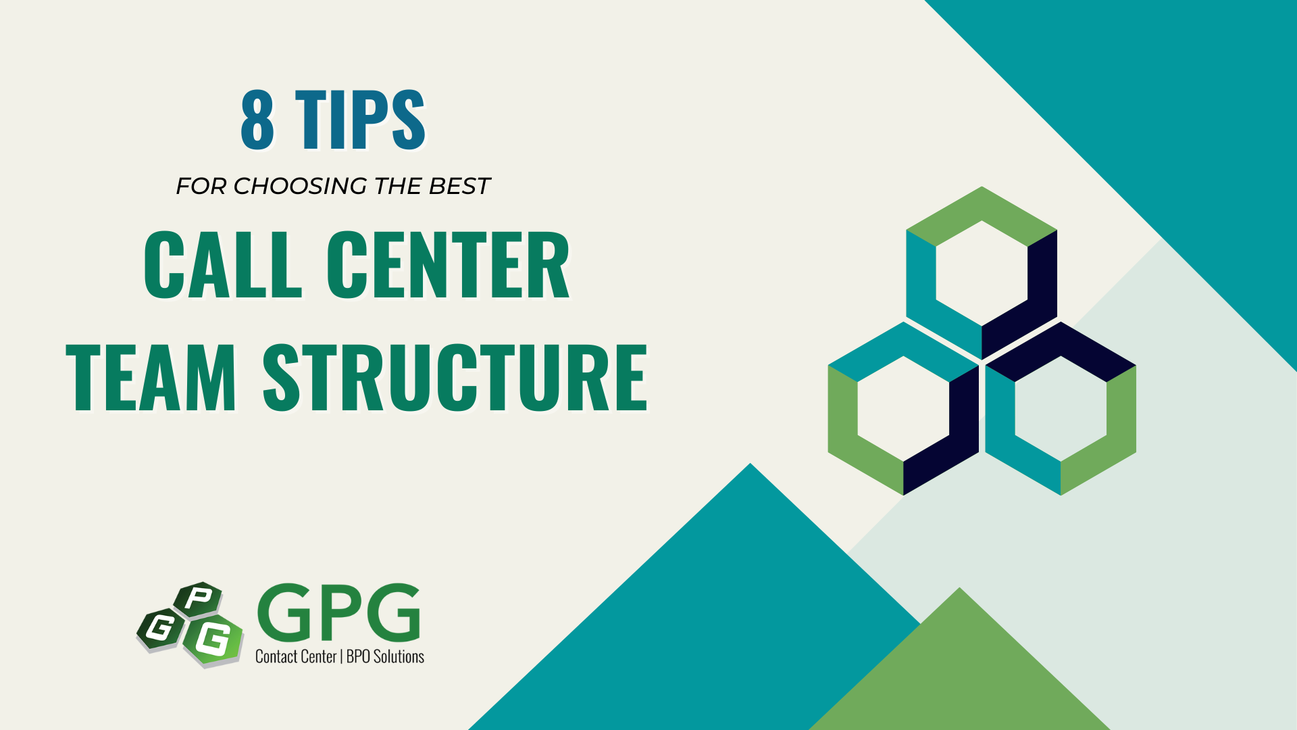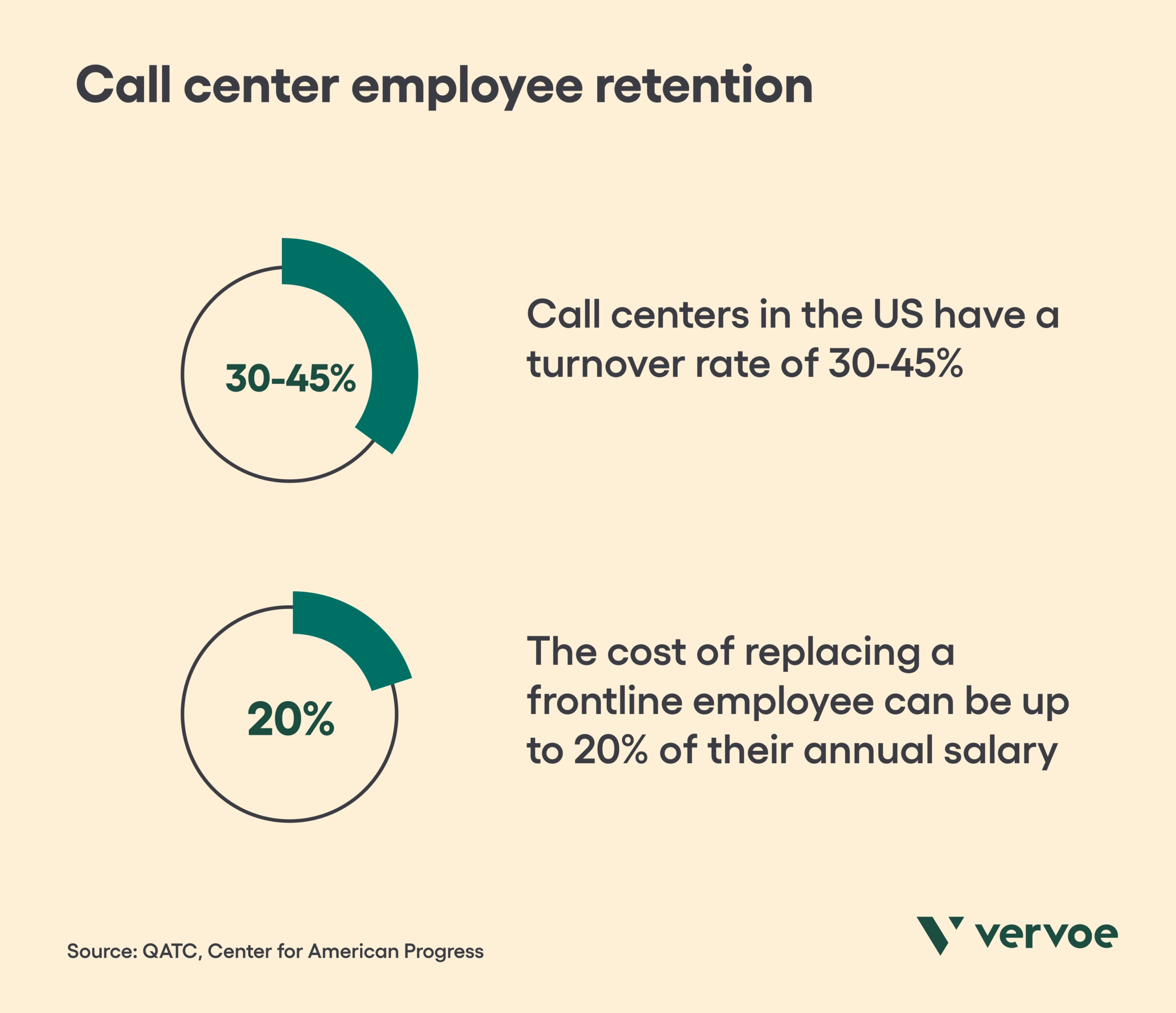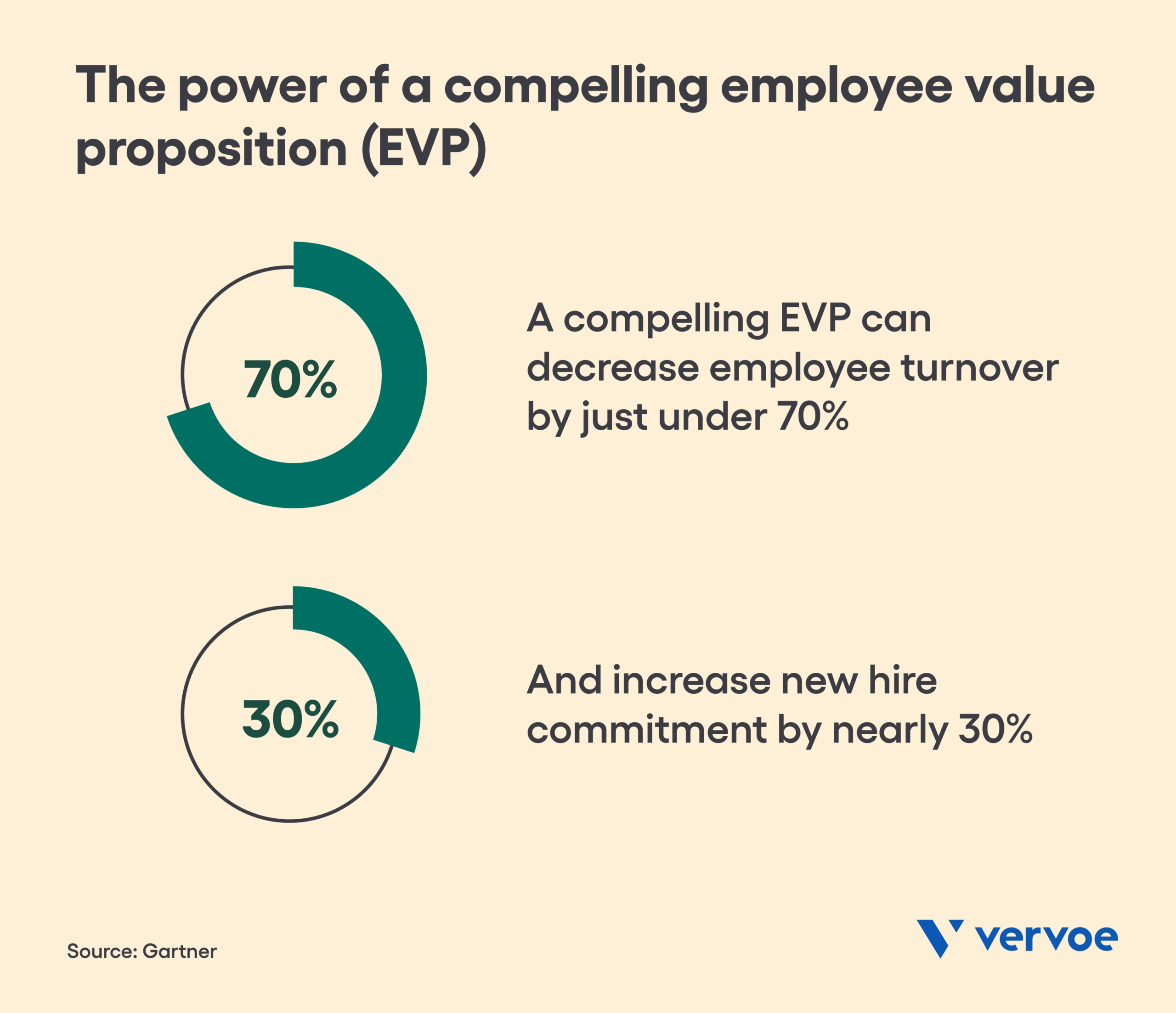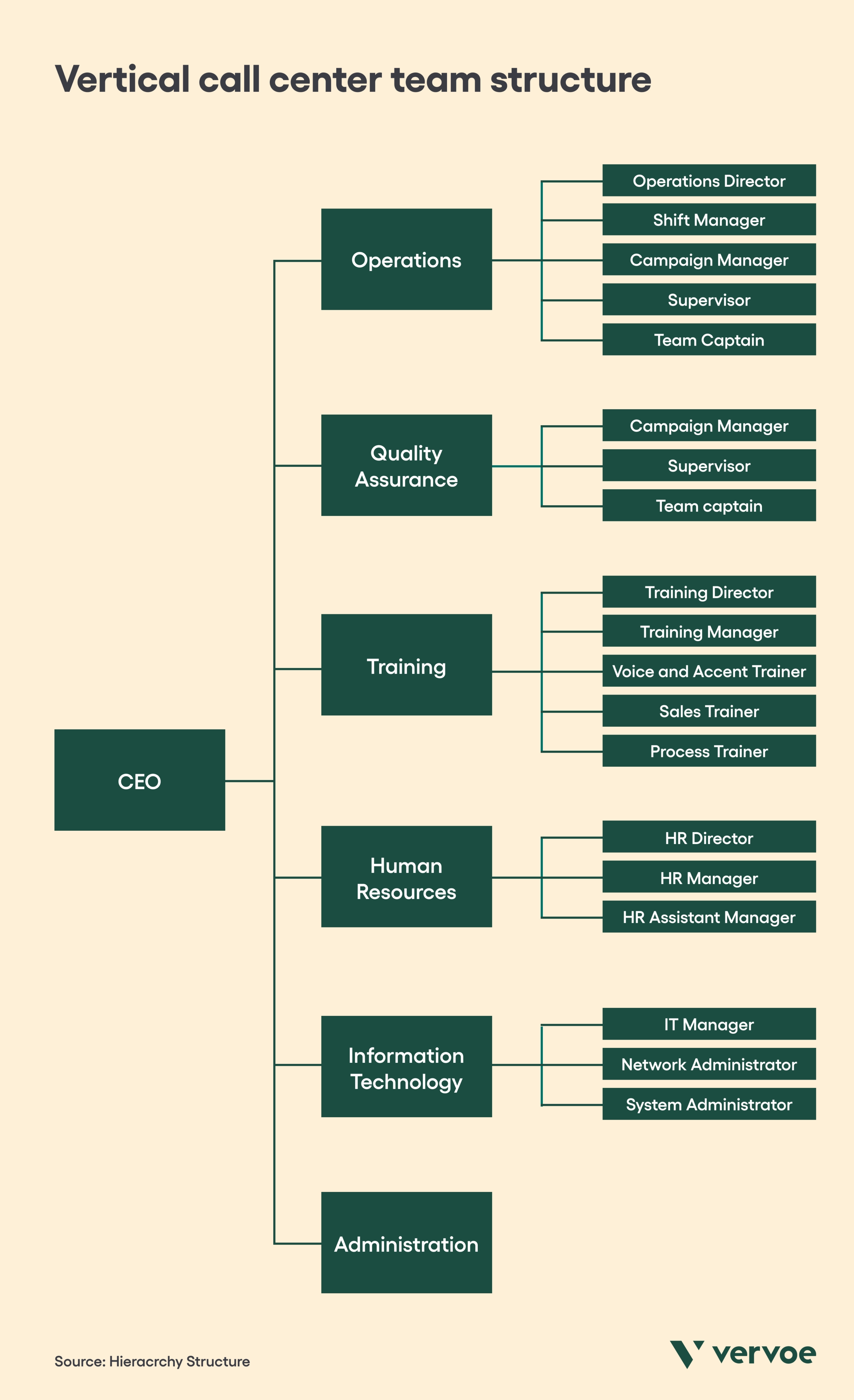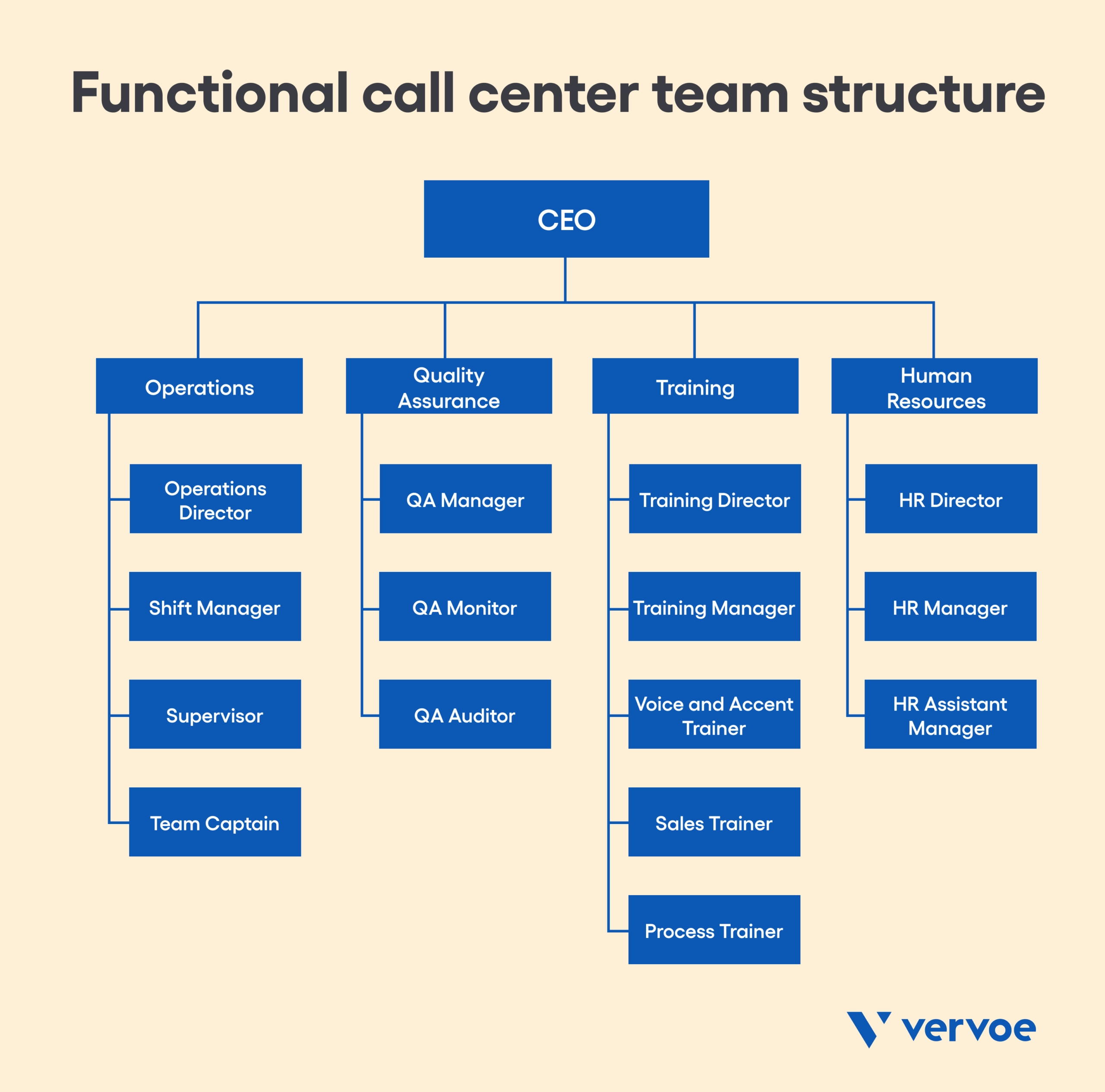Importance of call center team structure
A call center team structure can help sales and service teams avoid confusion, create an environment of accountability, and communicate with customers clearly to solve problems. Call centers are hives of activity. With customers calling by the minute to get support, there’s no room for error. The call center team structure clearly delineates responsibilities, helping customer service representatives quickly handle a situation or escalate it if needed. This can lower mean time to resolution, an important metric for improving customer satisfaction. Likewise, a clear call center structure helps with employee retention. It’s estimated that, on average, call centers in the US have a turnover rate of 30-45%. This is an expensive problem. The Center for American Progress estimates the cost of replacing a frontline employee to be about 20% of their full annual salary. Organizational structures provide transparency and stability for call center employees. When roles are clearly defined, so that each agent has the autonomy to handle a customer call or escalate it as needed, workers are liberated to make decisions and feel trusted. An organizational structure also provides a path for advancement. Opportunities for career growth, education, and personal development are at the center of an appealing employee value proposition. Research shows that a compelling EVP can decrease employee turnover by just under 70% and increase new hire commitment by nearly 30%. So, how do you create a structure for your call center operations that simultaneously boosts employee and customer satisfaction?Call center roles and responsibilities
Typically, contact centers have a hierarchy that includes executives, managers, supervisors, and staff positions such as center representatives or agents. The positions that you offer depend on the size of the call center; the bigger the center, the more roles you will need to support your customers. Here are a few examples of job titles that centers rely heavily on to make sure customer needs are met.1. Customer Services Director or Head of the Call Center
The most senior position in the call center typically reports to the C-Suite, either the Chief Operating Officer or directly to the CEO.2. Call Center Managers
These positions handle operational and tactical decisions, such as developing key performance metrics, managing outsourcing, or developing team leaders. A typical job title at this level would be Digital Contact Director or Operations Manager.3. Team Leader
The team leaders represent the middle-management function in charge of administrative tasks such as prioritizing tickets, scheduling agents, and monitoring performance.4. Center Agents or Reps
The call center technical support falls to the agents, representatives, or analysts on the frontline of customer interactions. These individuals are in charge of call processing, answering customer calls to try to troubleshoot and support issues and questions. Department leaders may also take customer calls, especially in very small teams or if the issue is more complex than an agent can handle. Outside of this hierarchy, additional support positions include analysts and technical support that maintain the customer database and can help integrate technology into the center operation.What does your business need?
The number of management positions, team leaders, and call center agents that your team needs depend on a few different factors.Type of service your business needs to provide
There are two main types of call centers: inbound and outbound call centers. An inbound call center is probably what you picture when you think of call center operations. This is typically a support center since it receives incoming calls from existing customers with issues or questions. An outbound call center makes outgoing calls to potential leads or new customers. In that regard, sales teams are the best use case for outbound call centers. However, sometimes companies use outbound phone calls to host marketing surveys or collect product feedback. The type of service your business needs will determine the best structure for your call center. For instance, inbound call centers will likely need more agents to help serve your existing customer base — anticipate higher call volume for a service-focused call center. An outbound unit can start small and scale with the company. Providing support, as compared to making sales, may also involve centralizing customer interactions across multiple channels. Today’s consumers expect that companies have a complete picture of all their brand interactions when they call for help. Technology like a CRM platform can help capture details from customer conversations across social media, email, phone, and more. And, accordingly, your agents need training or experience to use these tools.In-house or outsourced deployment?
Some companies choose to outsource their call centers. This decision can lower costs and help companies access a ready team of highly-trained agents. “With an outsourced call center, your company can save up to 50%”, estimates CallTools. However, there are some drawbacks to outsourcing your call center. Language and cultural differences can cause confusion. And, often, call centers work for multiple companies at once. There’s no way to ensure the agents answering your customer calls approach these interactions with the same care and attention that direct employees would.Your business size
Small businesses may or may not need an extensive call center. It depends on how many products or services they offer, their market size, and their budgets. Not only does it not make sense financially, but customers of small businesses often expect personalized care. Main street merchants bring familiarity, which can often be lost in a call center experience. You may be better off asking your human resources staff to assign someone to customer care.Your industry type
The industry in which you work can also influence your call center structure. If you work in a highly technical field, your call center agents may need specialized knowledge or coaching sessions to be able to provide the best support. This expertise should guide your job descriptions, as well as your benefits, compensation, and whether or not you choose to outsource your call center.Scope of service you provide
Finally, the support you provide could vary depending on the customer. Some companies offer tiered support depending on membership or subscription business models, where support is considered a feature that scales depending on the complexity of an enterprise. Your call center structure should account for these different customer types with separate contact centers or teams for those who pay for personalized care.8 steps to determine the best call center structure for you
As you begin designing your call center organizational structure, these steps can help you optimize your reporting and job functions for both the best customer experience and an engaging employee experience.1. Estimate call volumes
The number of customer calls you receive should determine the size of your team. This, in turn, helps you understand which roles you need to hire and how many support staff you will need. To estimate your call volumes, follow these steps:- Estimate how many times a customer account will call per month (for example, 3)
- Estimate how many customers will be using your product or service after three months (for example, 10,000)
- Assume how many of those calls will be fielded by the call center (e.g. 5%)
- Assume that 20% of these calls would be escalated, which results in 300 escalated calls per month.
- Then assume that 5% of those calls would be escalated to management: 15 calls per month.
2. Determine hours of operation
Your call center’s hours of operation determine both employee scheduling and influence the decision to outsource or build your customer support in-house. Many call centers start with availability during typical business hours, such as 8 am to 6 pm. Later, as demand grows, support may be offered 24/7. Or, if the call center is operated by a third-party partner, the hours may be more flexible. Likewise, the hours of operation play a role in hiring for outbound call centers. Many sales representatives value flexibility in their work schedule, so offering shift scheduling or autonomy in making calls can be a huge selling point.3. Determine call center size
Next, estimate how many team members need to work at your contact center. Estimate staffing requirements based on call volume projections, marketing strategies, and sales forecasts. Note that, particularly for outbound call centers, if your team is successful then you may need to increase hiring rapidly.How to refine call center size estimates
Not only should you plan ahead for hiring gaps, but you should also account for the normal ebbs and flows of staffing. Factor in staff absenteeism, staff days off, turnover, training, shifts, and specific call metrics, such as call volumes, call handling times, and wrap-up times, to understand exactly how many people you need working at once.4. Model an organizational structure
There are many different ways to map out an organizational structure. As you choose your specific structure, consider these questions:1. Chain of command
How are issues or tasks delegated, escalated, and resolved?2. Span of control
Who manages which employees, and what tasks fall under that department’s responsibilities?3. Centralization
Where are decisions made? Who has a say in each decision? These questions can help you design a call center organizational structure with clear lines of reporting and communication. There are many types of organizational structures you can implement with these three elements in mind. Options include a flat reporting structure, product reporting structure, line-and-staff reporting structure and network organization structure, for example. Here are some examples of three organizational structures you might use at your call center.Traditional vertical call center team structure
In a traditional hierarchy, the most senior leader sits at the top, and call center agents sit at the bottom. This structure clearly defines who each person reports to, different levels of authority, and which employees specialize in each aspect of customer support or sales. It also provides transparency into potential career trajectories for lower and middle management.Functional call center team structure
Companies that have technical or specialized products might create a call center in which employees are divided into functional units. Note that today’s technology means the call center doesn’t need to be based in one central location. Rather, employees can field calls from their discrete product teams, raising tickets with product managers or leveling feedback directly to marketing. This structure encourages employees to be more specialized, but it can lead to siloes that make it difficult to provide a unified customer experience.Matrix call center team structure
Call centers can be designed to hold both sales and service agents. In this regard, it might make the most sense to align your team leaders and support agents according to the product. Calls can be directed to service agents, and sales and marketing can work together on outreach campaigns for unique products. This type of structure can enhance transparency and visibility across the organization, but it also can lead to chaos if you don’t get the physical or digital workflow of your call center right. Ultimately, vertical organizational hierarchy shows the most promise and is the typical structure that most call centers use.5. Map out the physical or digital layout of your call center
If you are creating a physical call center, you may want to map out a floor plan that helps agents work productively. Your layout should consider acoustics, ergonomics, and collaboration so that teams can work together as necessary. Teams are often more productive if they sit with their team leader. Make sure everyone has a chair, keyboard, and headset that maximizes comfort. If you are hosting a virtual or remote call center, you’ll also need the right hardware and software to make your representatives’ lives easy. This includes setting up a voice-over-internet protocol (VoIP) or a cloud-based phone system, a CRM system, and a high-speed internet connection for each individual.6. Determine hardware and software needs
There’s a considerable range of hardware and software tools a call center can utilize. Having the right equipment can help lower response times, increase closed deals, and improve employee turnover. Here are some things to consider:- Desktop computers
- An automatic call distributor for call routing to specific agents or terminals
- A predictive dialer that automatically dials batches of numbers for outgoing calls from the center
- Voice solutions: IVR, voice logging, voice recording, and messaging systems
- Customer relationship management software
- Workforce management solutions for onboarding, training, and scheduling
- Management information systems
- VoIP recording systems to monitor agent performance
7. Run user acceptance testing (UAT)
User acceptance testing is like a trial run for your call center. It helps to ensure that everyone is prepared to take calls from a technological and training standpoint. Each member of your call center team, even senior leaders, should participate. They should be able to pinpoint any center training that is needed and understand how technology is functioning.8. Create a disaster recovery plan
Finally, plan for business continuity. In the event that something goes wrong, make sure there are backup systems in place to store data. Protect your customer information with the proper cybersecurity. And, don’t forget about on-site security — your disaster recovery plan should include emergency procedures for your staff in the event of a storm, earthquake, or fire.You’re ready to structure your call center team
Every call center organizational structure is different. Ideally, you’ll build a team of experts that can field calls, reach out to new leads, and provide the best possible customer experience. Whether you choose to outsource or build your team in-house, GPG's hiring practices and expertise can help.Source: 8 Tips For Choosing A Call Center Team Structure | Vervoe

